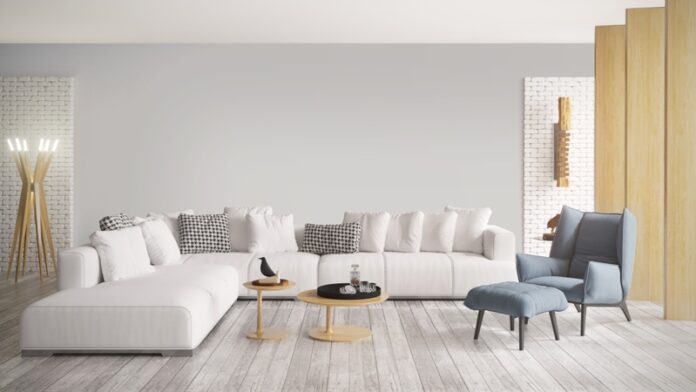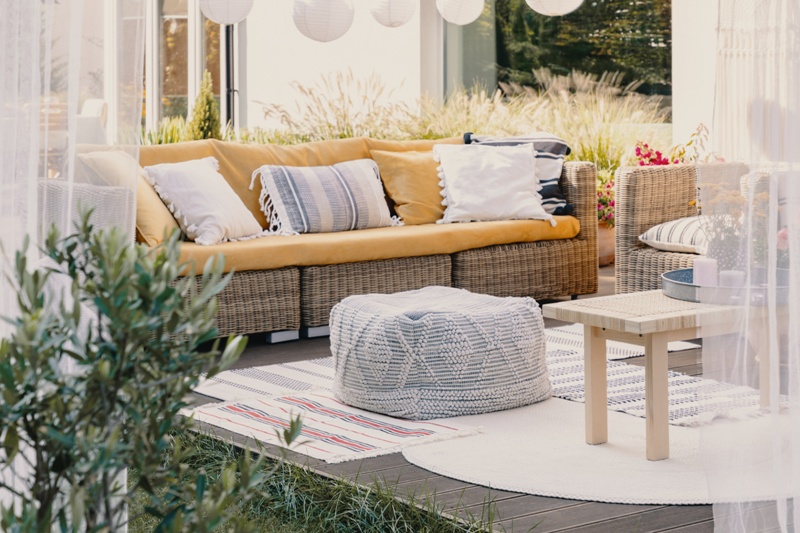While you’d initially think of furniture for practicality, these items can also transform the vibe of your space. Their color, size, and other design features can help you create a whole new look that can represent your style.
Nowadays, homeowners have learned to embrace the art of mixing and matching home pieces and design items. While some still perform this out of necessity, others love the freedom and challenge of gathering various items to pull off a cohesive yet dynamic home. Either way, mixing and matching your furniture items are a surefire way to build visual interest, replicate a certain style era, or simply spruce up your living space.
Moreover, with this, you’re no longer compelled to buy an entirely new set of furniture. You can simply buy what you think is necessary and mix them up with your old ones. It’s a perfect way to save up money while enhancing the look of your home.
Home Design 101: Mixing And Matching Furniture
Regardless of your space’s current size, decorating with home furniture can be quite a tricky task. Apart from various online recommendations, the sheer volume of available colors and accent pieces can be cumbersome.
If you’re currently scouting for ideas and inspirations to approach this design concept, you’re in the right place. For you to take advantage of your furniture, below are tips on mixing and matching them perfectly:
-
Select A Theme
When mixing and matching furniture, the goal is to use dissimilar pieces and create an integrated look that enhances your living space. While versatility and appeal are surely welcomed, selecting a theme is a brilliant way to help you stay on track in pursuing the vibe you’re going for.
For example, if you’re going for a summer, coastal vibe, you can spruce up your old pieces with a fresh coat of crisp, white paint. You can also add different furniture items that resemble the theme. Go for light earth-toned colors such as beige, khaki, turquoise, and the like. On the other hand, if you prefer a vintage theme, you can look into antique stores and flea markets near you. Choose pieces you can mix and match easily. Typically, when you think of vintage or retro, rustic pieces, bright carpets, and wooden cabinetries come to mind.
Unless you’re going for an eclectic style, you’d still want each piece to find a common ground. Again, the goal is to pull all of your assorted furniture to create a well-integrated, free-flowing yet dynamic living area. Moreover, a theme can help you invest in the right pieces that’ll fit your needs and design requirements. After all, you wouldn’t want to keep on buying pieces simply because you think they don’t look great when paired. All of your energy and money will only go down the drain if you make compulsive choices.
Likewise, consider shopping at stores that have categorized home design themes. For instance, Dreamo Living and other similar furniture shops have different showrooms according to specific styles and motifs. Taking a peek at showrooms can help you imagine whether a certain item clashes with your current home furniture and desired theme.
-
Choose A Color Palette
The aesthetics and features of your furniture pieces can greatly impact the ambiance of your space. Their visuals can also influence your level of comfort. As an example, certain colors can help ease the stress after a long, exhausting day from work. According to research, light and cool tones such as green and blue can help you unwind.
Thus, if you usually lounge outside, make sure to mix and match the appropriate colors to create the ideal space for you. For instance, creating a unified patio can help make your efforts less of an eyesore and more of a well-thought scheme, helping you facilitate feelings of relaxation.
However, while some homeowners love the creative challenge, others can’t seem to enjoy the task of looking for the right colors to mix and match. Throwing random furniture pieces altogether can seem quite confusing. For this reason, create and have a color palette. Apart from selecting a theme, a color palette can help you narrow down your search and avoid getting swayed by all the assorted options. To spice up your monochromatic efforts, use different tones of the same hue. This provides depth and appeal to your cohesive color scheme.
-
Curate A Mood Board
Look into magazines, read informative blog posts, and draw inspiration from various books. From these resources, collect photos matching your personal preferences and certain requirements and create a mood board out of them. This can guide you as you start to shop and arrange your furniture pieces at home. It can eliminate guesswork and help you achieve a smooth shopping experience.
Furthermore, if you’re working with an interior designer, allowing them to see your mood board can help them shortlist furniture pieces to pair with your current, random items. This is beneficial, especially if you have a rigorous work routine.
-
Assign A Focal Point
While using a single base hue is regarded as classic and sleek, not everyone will be able to get the gist of your concept. It can be easy to ditch this notion and prioritize your interests. However, it’d be best to also take into account how others feel about your interior concept.
Hence, to keep everything appealing, create and designate a focal point in your space. This can be a pop of color or a striking centerpiece. For instance, if you opt for a crisp, white theme, a brightly colored tabletop can attract attention. This allows your viewers and guests to appreciate your entire design scheme. Alternatively, if you have a predominantly minimalist-inspired guest room, you can add a unique bench or display your bold, contemporary furniture piece to add intrigue, breathe life into your space, and keep it cozy.
However, keep in mind not to overdo it as this can introduce distraction rather than beauty to your space. As a rule of thumb, add and assign one or two focal points and you’re all set.
Final Thoughts
While mixing and matching furniture can be quite demanding, your efforts are going to be worth the work once you’ve come up with a room that best represents your interests. By following the basic tips above, you’ll surely have an idea of how to approach this design strategy.



















